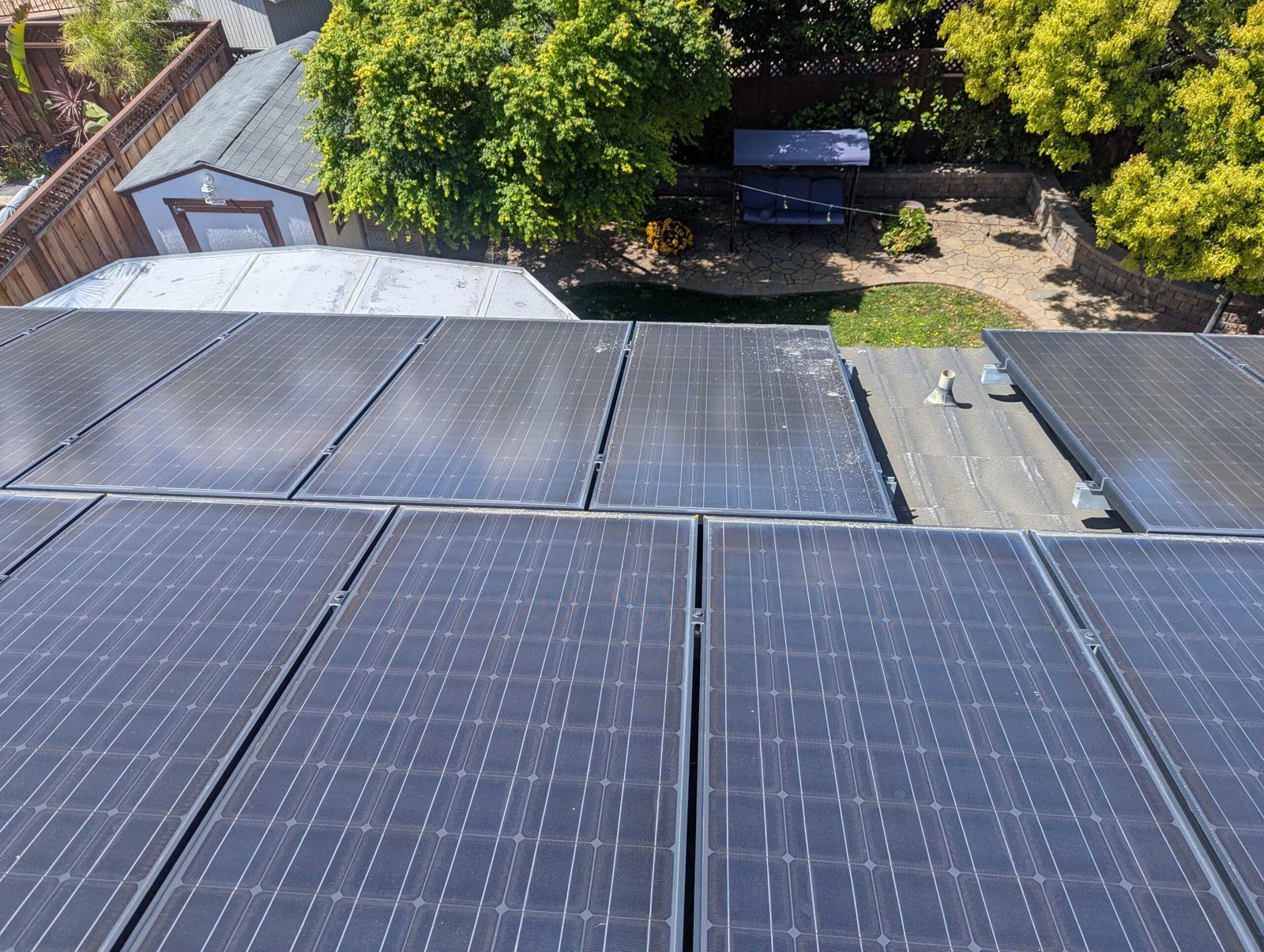At CalPacific Power, one of the most common questions we get from homeowners is: “Can solar panels be installed on my roof?” The good news is that solar technology has advanced so much that panels can be installed on nearly every common roof type. However, not all roofs are created equal when it comes to solar efficiency and installation complexity. In this article, we’ll break down everything you need to know about installing solar panels on different roof types, plus key factors like sunlight exposure, roof age, and structural integrity.
Common Roof Types and Solar Installation Methods
1. Asphalt Shingle Roofs
Asphalt shingles are the most popular roofing material in residential homes across North America. They are affordable, durable, and relatively easy to work with for solar installations. Installers at CalPacific Power typically secure mounting brackets into the roof rafters, ensuring water-tightness with flashing. Asphalt shingle roofs are ideal for homeowners seeking a cost-effective and straightforward solar installation process.
2. Clay and Slate Tile Roofs
Clay and slate tiles offer an elegant, upscale appearance but present unique challenges during solar panel installation. These materials are brittle and prone to cracking if not handled properly. To install solar panels, CalPacific Power technicians often remove specific tiles and replace them after mounting brackets are securely attached to the roof structure. This method demands specialized expertise and can result in higher labor costs. Despite these challenges, tile roofs can support solar panels effectively when installed by experienced professionals.
3. Metal Roofs
Metal roofs, especially standing seam designs, are highly compatible with solar panels. One of the biggest advantages of standing seam metal roofs is that panels can be clamped onto the seams without any drilling, which preserves the roof’s integrity and eliminates potential leak points. Corrugated metal roofs, on the other hand, may require drilled mounts, which should be carefully sealed. CalPacific Power’s experienced team ensures that metal roof installations are done with precision and care.
4. Wood Shingle Roofs
Wood shingle roofs are less common but still found on older or rustic-style homes. Solar installations on wood shingles are similar to asphalt shingle installations but require extra caution. The brittle nature of wood shingles increases the risk of cracking during the installation process. Homeowners with wood shingle roofs should work with installers like CalPacific Power who have experience handling delicate materials.
5. Flat Roofs (Concrete or Rubber)
Flat roofs are typical on modern residential structures and commercial buildings. Installing solar panels on flat roofs involves ballasted racking systems, which use weights to hold panels in place without drilling into the roof surface. These racks tilt the panels toward the sun to maximize energy capture. CalPacific Power specializes in designing custom ballasted solutions for flat roofs, ensuring maximum efficiency with minimal roof impact.
Factors That Influence Solar Suitability Beyond Roof Material
Roof Orientation and Pitch
The direction your roof faces significantly affects solar efficiency. In the northern hemisphere, south-facing roofs receive the most consistent sunlight throughout the day. Roof pitch (slope) also matters; an angle between 15° to 40° is generally optimal for capturing solar energy. CalPacific Power conducts detailed site assessments to determine the best panel layout for every project.
Shading Concerns
Even the best roofing materials can’t compensate for poor sunlight exposure. Trees, neighboring buildings, chimneys, or other obstructions that cast shadows on your roof can diminish your solar panel system’s performance. Before installation, a CalPacific Power site assessment evaluates shading issues and explores solutions such as microinverters or power optimizers.
Roof Age and Condition
If your roof is over 20 years old or nearing the end of its expected lifespan, it’s wise to consider a roof replacement before installing solar panels. CalPacific Power often coordinates roof replacement projects with solar installations to avoid future dismantling costs, ensuring a longer-lasting and more efficient system.
Structural Load Capacity
Solar panels add weight to your roof, typically between 3 to 5 pounds per square foot. Before proceeding, CalPacific Power conducts a structural evaluation to confirm that your roof can support the added load safely. Most modern homes are structurally capable, but older homes may require reinforcements.
When Solar May Not Be Feasible
While solar panels are adaptable to many roof types, some situations may limit their feasibility. Roofs with an excessively steep pitch (over 40 degrees) pose safety risks for installers and may reduce panel efficiency. Additionally, if your roof is heavily shaded throughout the year and alternative mounting options (like ground mounts) are not viable, solar may not provide a sufficient return on investment. CalPacific Power provides honest assessments to ensure solar is a smart investment for your home.
Key Takeaway
Solar panels can be installed on nearly every type of residential roof, from asphalt shingles and metal to clay tiles and even flat concrete roofs. The most crucial factors influencing solar viability are roof orientation, shading, age, structural capacity, and installation methods. By partnering with an experienced and certified solar installer like CalPacific Power, you can ensure your system is designed to maximize efficiency while preserving the integrity of your roof.
Interested in learning how solar could work on your specific home? Contact CalPacific Power today for a personalized roof assessment and a free solar consultation.
By considering all these factors—roof type, condition, orientation, shading, and structural readiness—you can confidently make an informed decision about switching to solar energy. CalPacific Power is here to guide you through every step of your solar journey.

